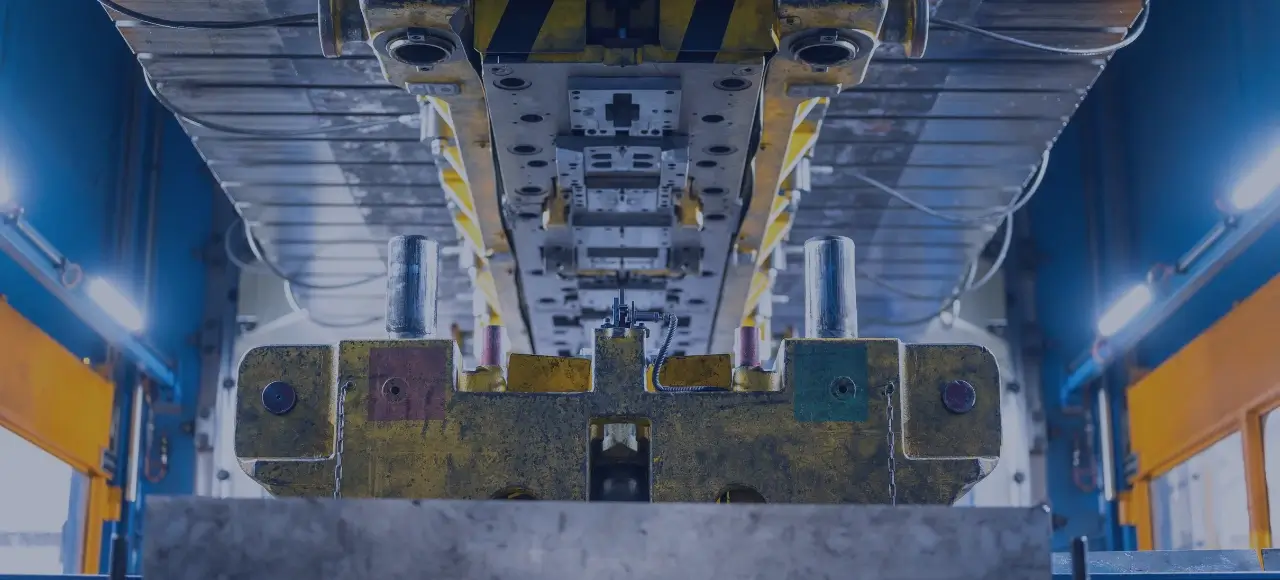Metal stamping is a highly versatile manufacturing process that has revolutionized various industries. It offers cost-effective, precise, and scalable solutions for producing metal parts. As a staple in multiple sectors, from automotive and aerospace to electronics and beyond, metal stamping has solidified its position as a cost-effective and high-volume production solution. Custom metal stamping has become a cornerstone of modern production processes with various applications across diverse industries. Let’s dive into the comprehensive blog to understand its process and industry applications.
Custom Metal Stamping: Process
Custom metal stamping is an efficient manufacturing process to create metal components tailored to specific customer requirements. It starts with the customer providing detailed design specifications, including dimensions, materials, and unique features. The appropriate metal material is selected based on these specifications, such as steel, aluminum, or copper, is determined based on these specifications. The design is then translated into a specialized die, which serves as the tool for shaping the metal.
In stamping, the metal material is fed into the press, where the die applies pressure to cut, bend, or form the metal into the desired shape. Various operations, such as blanking, piercing, drawing, and bending, may be performed to achieve the final configuration. Secondary functions, like trimming, deburring, and surface finishing, are carried out to refine the components further and ensure high-quality results.
Quality control is critical to custom metal stamping to guarantee that the parts meet the required specifications and tolerances. Inspection and testing techniques are employed to verify dimensional accuracy and consistency. Custom metal stamping is widely used in the automotive, electronics, aerospace, and medical industries, where precision and customization are essential for successful product development and manufacturing. The process’s efficiency and ability to produce large quantities of components with consistent quality make it a preferred choice for diverse industrial applications.
Different Metal Stamping Processes
Progressive Stamping
- Progressive stamping is a high-volume, automated metal stamping process that produces complex parts.
- Progressive stamping is a high-volume, automated metal stamping process that produces complex parts
- It involves a series of stations, each performing a different operation on the metal as it moves through the press.
- The material is fed through the press continuously, and multiple operations are completed with each stroke of the press.
- Each station has a unique die and punch set to perform specific cutting, bending, or forming tasks.
- This technique is efficient for high-volume production and ensures consistent and precise parts.
Transfer Stamping
- Transfer stamping is similar to progressive stamping but involves transferring parts from one station to another using mechanical arms or robots.
- In transfer stamping, the material is initially punched from the strip or sheet and then transferred to successive stations for further operations.
- The transfer process allows for producing more extensive and complex parts that may not be feasible in a single-station progressive press.
Deep Drawing
- Deep drawing is a process used to form a sheet metal blank into a three-dimensional shape, typically a cup or a cylindrical component.
- The sheet metal blank is placed over a die, and a punch is used to draw the metal into the cavity.
- The depth of the drawn part is more than its diameter, making it a deep-drawn component. This technique is commonly used to manufacture kitchen sinks, automotive parts, and metal containers.
Compound Die Stamping
- A compound die is a stamping die that performs multiple cutting and forming operations in a single press stroke.
- It combines several individual operations, such as blanking, piercing, and bending, into a single die set.
- Compound die stamping is suitable for producing medium-complexity parts with reasonable precision.
Blanking
- Blanking is an essential metal stamping operation to cut out a flat shape (blank) from a sheet metal stock. The die and punch have sharp cutting edges that shear the metal to create the desired shape.
- The blanked parts can be further processed in other stamping operations.
Punching
- Punching is a process used to create holes or cutouts in sheet metal.
- A punch is a specialized tool that forces the metal into a die with the desired hole or cutout shape.
- Punching can be a standalone operation or part of a progressive or transfer stamping process.
Coining
- Coining is a precise metal stamping process used to create highly detailed features or patterns on the surface of a part.
- The metal is compressed between the punch and the die to form an intricate design.
- This technique is commonly used for adding logos, trademarks, or identification marks on metal components.


Metal Stamping Applications Across Industries
Metal stamping finds widespread applications across various industries due to its versatility, cost-effectiveness, and ability to produce large quantities of precise components. Some of the critical sectors where metal stamping is commonly used include:
- Electronics and Electrical Industry: Vital for producing electronic devices and electrical equipment components. Examples include connectors, terminals, contact springs, heat sinks, and various electronic housing parts.
- Power Generation: Metal stamping is employed to produce components used in power generation equipment, such as electrical contacts, transformer components, and generator parts.
- Construction Industry: Metal stamping produces various components, including brackets, fasteners, hinges, and structural supports.
- Telecommunications: Metal stamping is essential for creating components in telecommunications equipment, including connectors, antenna brackets.
- Consumer Goods: Metal stamping is prevalent in producing various consumer goods like toys, kitchenware, and decorative items.
- Automotive Industry: Metal stamping is extensively used in the automotive sector to manufacture components such as body panels, chassis parts, brackets, hinges, and engine parts. It offers high production rates and cost-efficient manufacturing for automotive manufacturers.
- Appliance Manufacturing: Household appliances, such as washing machines, refrigerators, and ovens, often incorporate metal-stamped parts like panels, frames, and structural components.
- Medical and Healthcare: The medical industry utilizes metal stamping for manufacturing surgical instruments, medical devices, and implantable components due to its ability to produce precise and sterile parts.
- Military and Defense: The military and defense industries use metal stamping to manufacture components for vehicles, weapons systems, and other defense-related equipment.
- Energy and Renewable Energy: Metal stamping techniques are commonly used to manufacture components for renewable energy systems like solar panels and wind turbines.
- Furniture Manufacturing: To create hardware components for furniture, including brackets, hinges, and fittings.
- Aerospace Industry: The aerospace sector relies on metal stamping to create critical components like aircraft structural parts, brackets, and fittings. Precision and consistency in metal stamping ensure safety and reliability in aerospace applications.
Final Words
Custom metal stamping remains at the forefront of innovation as industries evolve, meeting the diverse demands for precision-engineered components. The wide array of applications discussed in this article highlights the profound impact of metal stamping in shaping modern infrastructure and technology.
With its expertise in manufacturing and a network of trusted suppliers, Zetwerk has been a reliable partner for industries seeking top-notch metal stamping components. Their commitment to quality, advanced manufacturing techniques, and ability to deliver custom solutions have made them a preferred choice for companies across different sectors. As technology and engineering standards advance, companies like Zetwerk play a crucial role in ensuring that metal stamping remains integral to driving innovation and progress in manufacturing industries.




FAQs
Metal stamping is a manufacturing process that involves shaping metal sheets into specific forms using dies and press machines. The method includes several stages, like blanking, piercing, bending, and coining, where the metal is cut, formed, and bent to create the desired part.
Metal stamping finds applications in various sectors, including automotive, electronics, aerospace, medical, renewable energy, home improvement, and industrial machinery. It caters to the diverse needs of these industries, producing high-quality components.
Metal stamping works with various materials, including steel, aluminum, copper, brass, and stainless steel. The material selection depends on the specific application and the desired characteristics of the final product.
Custom metal stamping can be cost-effective even for small-scale projects. The process allows for high-volume production, reducing the per-unit cost. Additionally, the precision and repeatability of metal stamping ensure consistency in part quality.
Metal stamping offers advantages over other methods like CNC machining. It excels in producing large quantities of parts with consistent quality, making it suitable for mass production. On the other hand, CNC machining is more appropriate for smaller batch sizes and complex geometries that may not be feasible with metal stamping.








